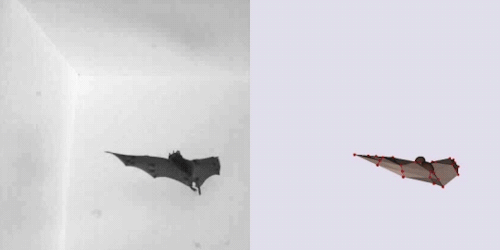One Of The Physicists Who Helped Find The Higgs Boson, Elina Berglund, Has Spent The Past Three Years

One of the physicists who helped find the Higgs boson, Elina Berglund, has spent the past three years working on something completely different - a fertility app that tells women when they’re fertile or not.
It’s not the first fertility app out there, but Berglund’s app works so well that it’s been shown to help women avoid pregnancy with 99.5 percent reliability - an efficacy that puts it right up there with the pill and condoms.
Best of all, the app doesn’t have any side effects, and just requires women to input their temperature daily to map their fertility throughout the month.
Back in 2012, Berglund was working at CERN on the Large Hadron Collider experiment to find the famous Higgs boson. But after the discovery of the particle, she felt it was time to work on something completely different.
“I wanted to give my body a break from the pill,” she told Daniela Walker from Wired, “but I couldn’t find any good forms of natural birth control, so I wrote an algorithm for myself.”
The resulting app is called Natural Cycles, and so far, it’s had pretty promising results.
Continue Reading.
More Posts from Curiositytherover and Others




The world is racing to build a moon base — here’s what it could look like
The European Space Agency just reminded the world that it wants to build a base on the moon by 2030, using 3-D printed parts made from materials found on the lunar surface. But the ESA has some stiff competition.

Antibiotic Resistance: Scientists Uncover the Secret Behind This Powerful Weapon
Of course, humans and bacteria are somewhat different. As a result, it’s no surprise that these tiny creatures transfer genes differently from humans and even plants.
Besides binary fission, where the genetic material is segregated equally into two daughter cells, bacteria also have another method of gene transfer—namely, horizontal gene transfer (HGT). HGT has long been known to be responsible for spreading unique traits in bacteria, especially antibiotic resistance. Though we’ve long known that it is able to exert a rather strong effect, the why (or how) has remained a mystery.
At least, until now.
Researchers from Oxford University have demonstrated, through mathematical modelling, that the secret is migration, whereby movement between communities of microbes greatly increases the chances of different species of bacteria being able to swap DNA and adopt new traits.
Read more & check the video at http://futurism.com/links/antibiotic-resistance-scientists-uncover-the-secret-behind-this-powerful-weapon/

Ridiculous History: H-bombs in Space Caused Light Shows, and People Partied. Find out more on HowStuffWorks NOW.

This is the spaceship that could bring humans to Mars
Follow @the-future-now
Neptune-size exoplanet around a red dwarf star
Goleta CA (SPX) Nov 27, 2015 A team of astronomers have used the LCOGT network to detect light scattered by tiny particles (called Rayleigh scattering), through the atmosphere of a Neptune-size transiting exoplanet. This suggests a blue sky on this world which is only 100 light years away from us. Transits occur when an exoplanet passes in front of its parent star, reducing the amount of light we receive from the star Full article


Stephanie Kwolek, the inventor of Kevlar, passed away this week at age 90
“A true pioneer for women in science,” passed away on Wednesday, reported the New York Times. As a DuPont scientist, Stephanie Kwolek is credited for inventing Kevlar in 1964, a fiber that has radically improved police and military body armor since its creation.
Kwolek died at age 90 in hospice care at St. Francis Hospital in Wilmington, Del. She leaves behind a legacy of achievement in science and technology that directly saved an estimated 3,000 lives of police officers over the past four decades.
Read more | Follow micdotcom




A new study (published in PLOS Biology) investigated how bats make sharp turns in the air, particularly when they have to grab the ceiling. It turns out aerodynamics have very little to do with it - it’s all about inertia. Just as a figure skater clutches his arms to his chest to increase his speed, bats pull in their wings to help them make turns.
You can read all about it (and see more video) in this piece by my friend Nsikan Akpan over at PBS Newshour.

Space exploration is pretty amazing right now. Just yesterday, we launched the ExoMars 2016 spacecraft, which will hunt for signs of life on Mars, and by now, the Voyager 1 spacecraft is likely way out in interstellar space. NASA recently announced that it plans to visit Europa, one of the most promising candidates in our Solar System to host life, and even NASA’s chief scientist thinks we’ll find alien life within 20 to 30 years, as long as we keep exploring.
But how do you keep track of all these awesome space missions? To help out,the guys at Pop Chart Lab have created this beautiful poster showing our space exploration to date. It spans all the way from 1959 to 2015, and features over 100 exploratory probes, landers, and rovers.
As you can see on the poster below, the majority of our machines never leave Earth’s orbit. There are a whole lot of crowded lines near our planet, each of which belongs to a space probe or explorer of some kind. But as you get further from Earth, there are less and less of these brave explorers, and you get to see just how far humanity has travelled into our Solar System.

We normally post our tech news roundups on Fridays, but due to turkey, football, and lots of napping, we’re publishing it today instead. Enjoy!
1. The right drones for everyone this holiday season Love is in the air, and here’s a list of UAVs you can use to catch it. There’s never been a better reason to sit around while your relatives drone on and on. Really. With gifts like these the holidays will fly right by. via: Quartz
2. New tech can wirelessly charge your electronics with a standard Wi-Fi router There’s a good reason your Wi-Fi router is always shooting dirty looks at your laptop’s power cord. But rather than stoop to their level, routers everywhere are taking up the slack. Try to be sympathetic when your power cord finally winds up jobless. It’s bound to come as a shock. via: BGR 3. The Pickle Index is a Delightfully Weird, App-Driven Novel Like No Other Immersive multimedia experiences are becoming more and more advanced every day, but there are plenty of people who still use monomedia to get their virtual realities. With The Pickle Index, techies and bookworms will finally have something to talk about if they’re both forced to interact with other humans. via: WIRED
4. Circuit Board Tattoos That Actually Work Will Make Your Cyborg Fantasies Come True Do yourself a favor and only get tattoos in languages that you understand. Otherwise you might end up with a bunch of spurious output, and it’s going to take forever to find that missing comma. via: Gizmodo
-
 shakilstuff liked this · 2 years ago
shakilstuff liked this · 2 years ago -
 terminallydumb liked this · 2 years ago
terminallydumb liked this · 2 years ago -
 theweirdlynx liked this · 2 years ago
theweirdlynx liked this · 2 years ago -
 testostergnomes liked this · 6 years ago
testostergnomes liked this · 6 years ago -
 droptheviolin reblogged this · 6 years ago
droptheviolin reblogged this · 6 years ago -
 zalera liked this · 6 years ago
zalera liked this · 6 years ago -
 wvterproof liked this · 6 years ago
wvterproof liked this · 6 years ago -
 fresaissimo-blog reblogged this · 6 years ago
fresaissimo-blog reblogged this · 6 years ago -
 thinkincolour liked this · 7 years ago
thinkincolour liked this · 7 years ago -
 unimimi reblogged this · 7 years ago
unimimi reblogged this · 7 years ago -
 tiiimezombie liked this · 7 years ago
tiiimezombie liked this · 7 years ago -
 kittyvenvenz liked this · 7 years ago
kittyvenvenz liked this · 7 years ago -
 squirtle-i-choose-you reblogged this · 7 years ago
squirtle-i-choose-you reblogged this · 7 years ago -
 sparkle-goddess-says liked this · 7 years ago
sparkle-goddess-says liked this · 7 years ago -
 potterhead4vida liked this · 7 years ago
potterhead4vida liked this · 7 years ago -
 tysavestheworld reblogged this · 7 years ago
tysavestheworld reblogged this · 7 years ago -
 gagoze liked this · 7 years ago
gagoze liked this · 7 years ago -
 pensyl-vester reblogged this · 7 years ago
pensyl-vester reblogged this · 7 years ago -
 tysavestheworld liked this · 7 years ago
tysavestheworld liked this · 7 years ago -
 sydabunn liked this · 7 years ago
sydabunn liked this · 7 years ago -
 weekendatchasons reblogged this · 7 years ago
weekendatchasons reblogged this · 7 years ago